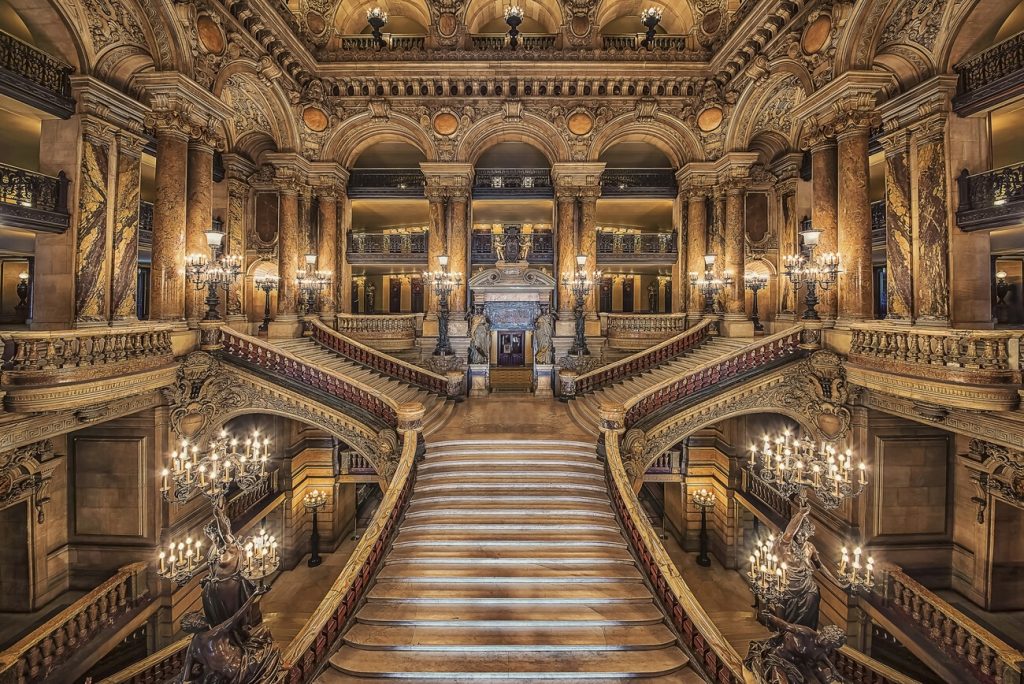PALAIS GARNIER
Echoes of Elegance: The Palais Garnier’s Legacy of Artistry and Architecture
Situated at the heart of Paris, the Palais Garnier is a distinguished emblem of the French capital’s architectural and cultural magnificence. This opera house, constructed from 1861 to 1875 upon the request of Emperor Napoleon III and under the architectural guidance of Charles Garnier, has been a pivotal cultural venue for over a century. The Palais Garnier, with its capacity of 1,979 seats, stands as a symbol of Parisian art and elegance alongside notable landmarks such as Notre Dame Cathedral, the Louvre, and Sacré Cœur Basilica.
The design of the Palais Garnier incorporates an eclectic mix of architectural styles, embodying elements of Baroque, classicism, and Renaissance. This stylistic amalgamation, known as the Napoleon III style, reflects the opulence and grandeur of its time. The interior and exterior of the opera house are adorned with an extensive variety of materials and decorative details, from multicolored marble to gilded bronze, creating an atmosphere of unparalleled luxury and aesthetic splendor.

The opera house’s exceptional acoustics contribute significantly to its world-renowned status, enhancing the auditory experience of performances within its walls. It serves primarily as the venue for the Paris Opera Ballet and has been recognized as a historical monument in France since 1923. Additionally, the Palais Garnier’s role as the setting for Gaston Leroux’s “The Phantom of the Opera” has further solidified its position in both literary and popular culture.
In modern times, the Palais Garnier continues to captivate visitors not only with its architectural beauty and historical significance but also through its dedication to the performing arts. The opera house remains a key player in Paris’s vibrant cultural scene, offering a diverse array of performances that celebrate both classical traditions and contemporary innovations in opera and ballet.
Through its enduring legacy, the Palais Garnier stands as a testament to the artistic and cultural vitality of Paris, inviting audiences from around the world to experience the magic of performance art in one of the most illustrious venues in existence.
